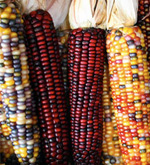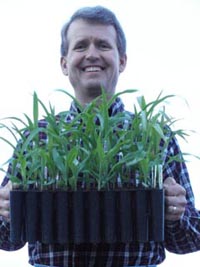Summary
Investigator: Frank Kutka, Seed We Need, Dickinson, North Dakota
Project location: North Dakota
The purpose of this five year breeding project is to reduce the incidence of transgenic contamination of organic maize grown in the U.S. by maintaining the integrity of maize seed.
The first objective is the development of “Organic-Ready” maize populations for organic farmers that are less prone to transgenic contamination. This will be accomplished by continuing a 9 year project by Seed We Need to cross the Ga1s allele for gametophytic incompatibility into a number of modern maize populations with maturities that range from 75- 125 days in order to assist farmers from southern Canada to the southern USA in meeting organic market demands for food that is free or nearly free of transgenes. Populations like these can be used for forming population hybrids that make for cheap and easy organic seed production and which are productive in farmers’ fields. The process outcome for this objective will be the resulting populations themselves. Seed producers will be contracted to release these new populations and some early versions will be released to the public via the USDA.The second objective will be the development of maize lines with purple seeds (“blue corn”) for use in testing for Ga1s and for production of organic blue corn.
The third objective will be the education of seed producers and organic farmers on how to use these “Organic-Ready” populations and how to be good stewards of the trait for reducing the incidence of transgenes. This objective will be accomplished via a short publication and a video posted to the web that explain the trait and how it works, standard measures for reducing outcrossing, and techniques to make sure that the populations maintain their lack of transgenic contamination via an integrated approach.
A final report describing the results of this project will be posted when complete.


